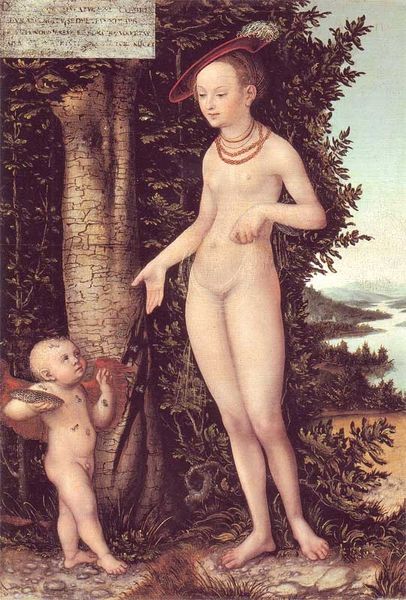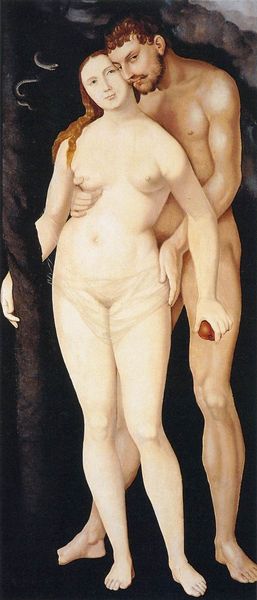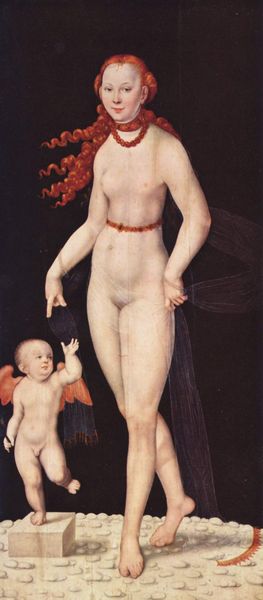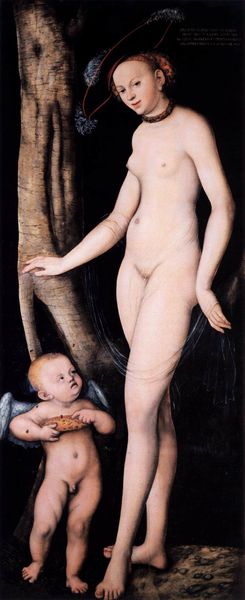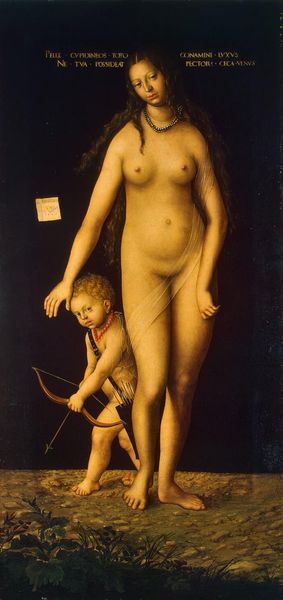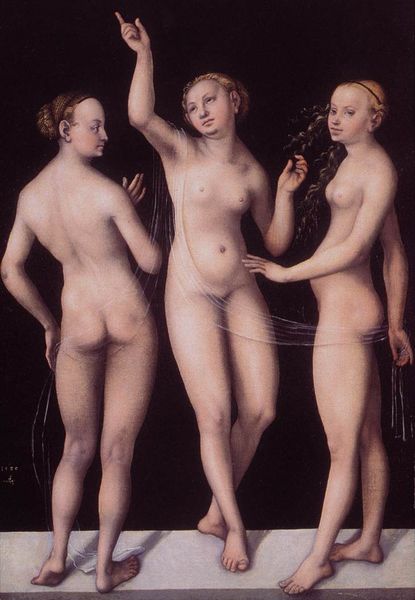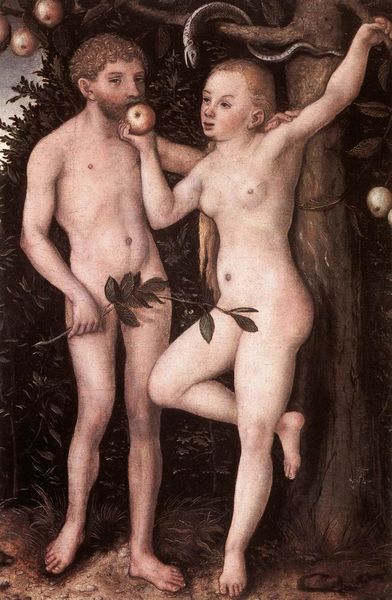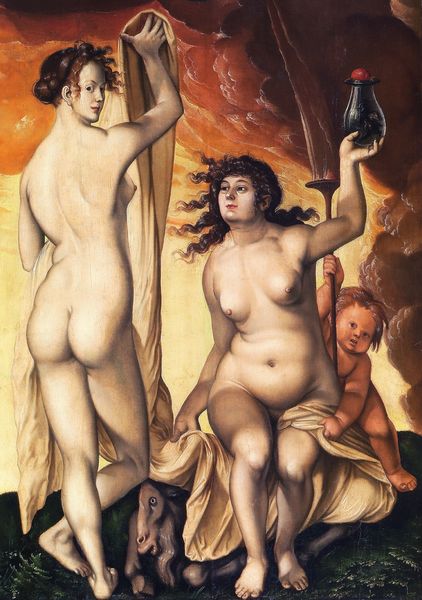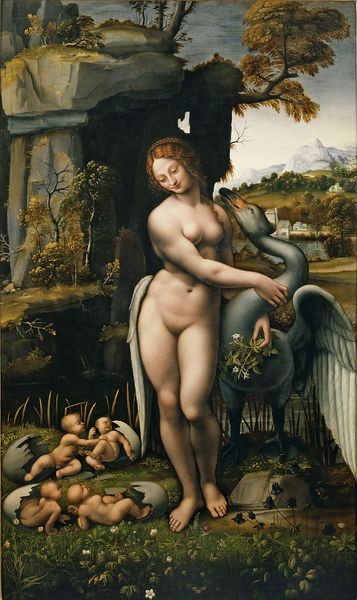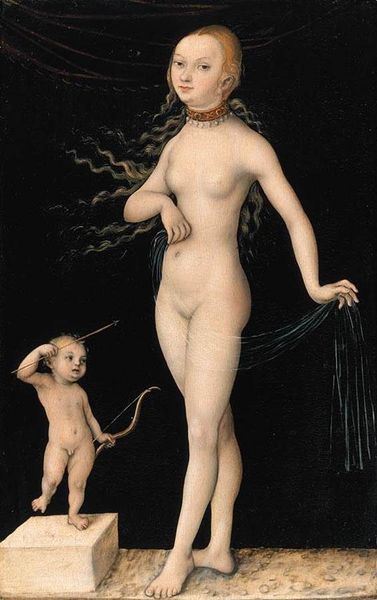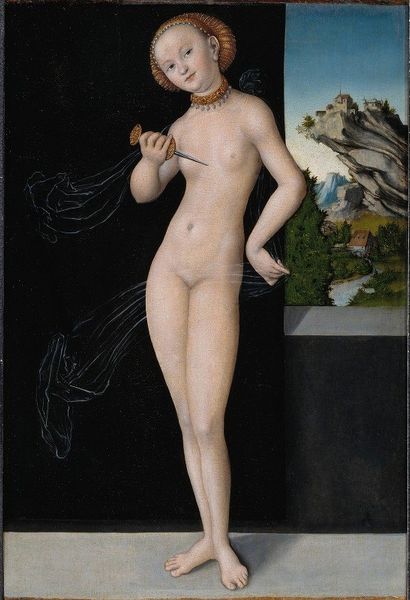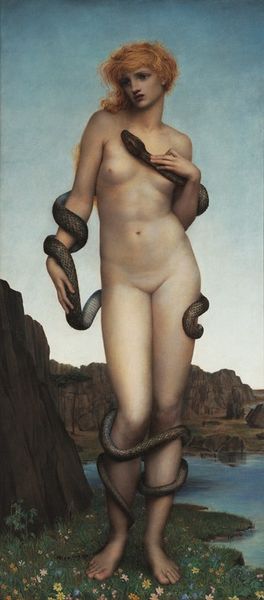
painting, oil-paint
#
allegory
#
painting
#
oil-paint
#
figuration
#
christianity
#
mythology
#
northern-renaissance
#
nude
Dimensions: 32.5 x 63 cm
Copyright: Public domain
Hans Baldung painted “Eve, the Serpent and Death” in oil on wood around the first quarter of the 16th century. This work, which has ties to both the Northern Renaissance and the German Reformation, presents a darkly moralizing version of the Garden of Eden story. The picture creates meaning through visual codes like the serpent, which symbolizes temptation, and the figure of death, a reminder of mortality. Baldung was working in a Germany rife with religious and social upheaval. His art often reflected these tensions, questioning established norms. Martin Luther's critiques of the Catholic Church were gaining traction, and artists like Baldung found themselves at a crossroads, navigating new ideological currents. To truly understand this piece, we need to delve into the cultural and religious context of the time. Contemporary religious tracts and sermons, even personal letters, can reveal much about the meaning that such images held for their original audiences. Ultimately, the role of the historian is to uncover these layers of meaning, and to consider how art shapes and is shaped by the society in which it is made.
